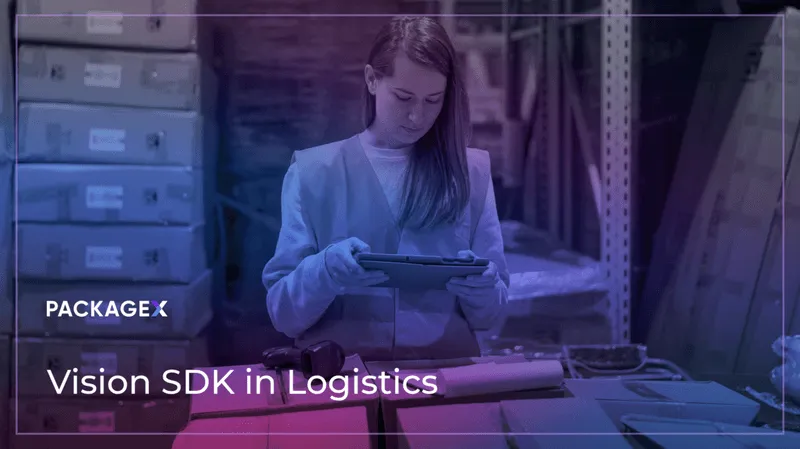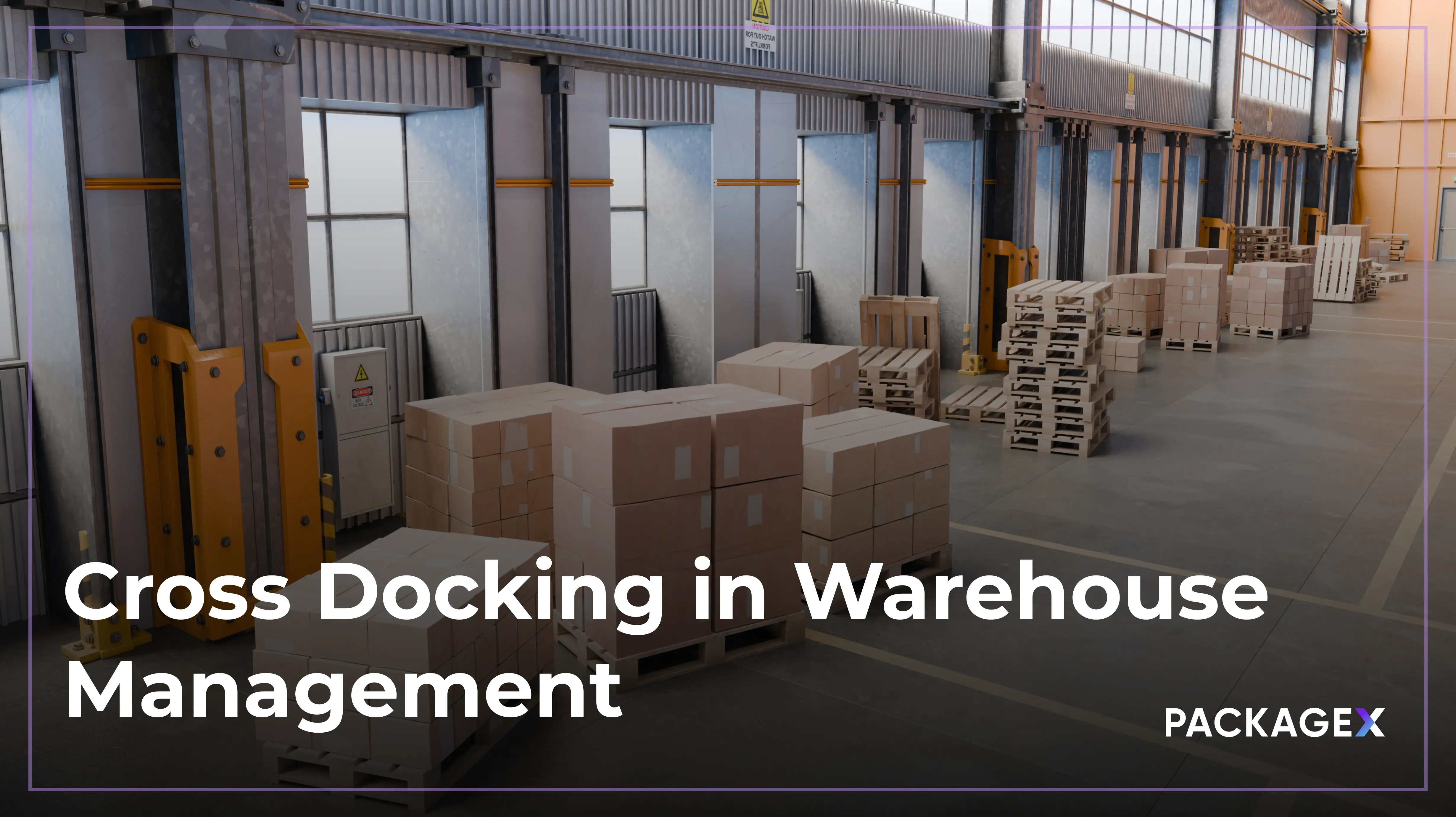How can logistics keep up with rising demand?
As we all know, logistics is a fast-paced field where efficiency and accuracy can make or break operations. Every day, logistic companies handle innumerable shipments, maintain inventory, and complete substantial paperwork—all of this while dealing with the stress of tight deadlines. A single mistake in item tracking, shipping labels, or documentation can result in lost shipments, costly delays, and, worse of all, unhappy and dissatisfied customers.
With increasing demand and rising storage costs every day, logistics companies need smarter solutions to stay ahead. Do you know what it is? Automating vital procedures such as inventory control, verification, and scanning. In today’s world, these technologies are regarded as necessities rather than just advantages. Vision SDK is designed to fill this gap, which gives logistics teams the resources they require to operate more efficiently, minimizing mistakes and enhancing each stage of the supply chain.
This article explores how an integrated technological solution can address these challenges, solve them, and significantly impact supply chain operations.
Key Features of Vision SDK and Their Importance
The following section explains the standout features of our Vision SDK and why they are a must-have:
1. On-Device Scanning of Shipping Labels, Item Labels, and BOLs
Traditional logistics processes often involve manual data entry, which is not only time-consuming but also prone to human errors. Our Vision SDK transforms this process with automated on-device scanning, minimizing mistakes and cutting down paperwork. This not only increases efficiency but also saves valuable time, making logistics smoother and more reliable.
- Shipping Labels: These labels contain essential information such as the destination address, tracking numbers, and carrier details. Automated scanning ensures quick and precise identification of shipments, reducing the risk of delivering them at the wrong place and enhancing overall supply chain visibility.
- Item Labels: Each product within a shipment carries an item label that includes SKU numbers, product descriptions, and batch details. Scanning item labels helps track and verify individual products, minimizing discrepancies, improving inventory accuracy, and ensuring compliance with order specifications.
- Bills of Lading (BOL): The BOL is a legally binding document that serves as a receipt for shipped goods, detailing shipment origin, destination, and consignee information. Instant retrieval of BOL data improves documentation accuracy, facilitates compliance with regulatory requirements, and enhances transparency between shippers and carriers.
Having the ability to scan these documents directly on a device enhances operational efficiency by eliminating the need for external scanning hardware and reducing dependence on manual input.
2. Barcode and QR Code Scanning
Barcodes and QR codes are widely used in logistics for tracking, inventory management, and authentication. Our SDK provides:
- Fast and accurate scanning: Captures barcodes from a distance of up to 4 feet in less than 100 milliseconds, reducing the time required for inventory checks and shipment verification.
- Offline capabilities: Ensures that scanning can be performed without an internet connection, improving usability in warehouses and remote locations.
- Seamless integration with existing systems: We provide SDKs for iOS, Android, Flutter, and React, allowing businesses to integrate barcode and QR code scanning into their existing systems without any hurdles.
By incorporating barcode and QR code scanning into a single SDK, businesses can simplify their logistics operations and improve tracking efficiency.
3. Augmented Reality (AR) for Item Retrieval and Counting
Our Vision SDK’s Augmented Reality (AR) capabilities enhance logistics by providing an interactive and visual way to manage inventory directly on-device.
- Item Retrieval: The SDK enables workers to quickly locate specific items within a warehouse by displaying real-time directional overlays on their device screens. Using AR-guided navigation, employees can efficiently move through storage areas to find items with minimal effort, which reduces search time and improves workflow efficiency.
- Item Counting: The SDK automates inventory counting by leveraging AR-based visual recognition. Workers can scan an area, and the system will instantly detect and count items, ensuring higher accuracy and eliminating manual counting errors. This feature is particularly useful in high-volume warehouses where speed and precision are critical.
By integrating these AR-driven capabilities, our Vision SDK optimizes warehouse operations, streamlines inventory management, and accelerates order fulfillment with greater accuracy and efficiency.
Impact of an Integrated Vision SDK in Logistics
Precision and efficiency are essential for any logistical operation to run well. At PackageX, our integrated Vision SDK will transform the industry by automating data capturing, minimizing human error, and optimizing workflow processes. It ensures seamless supply chain management, reduces manual labor, and increases productivity by enabling real-time document scanning and processing. This innovative technology makes logistical processes faster and more economical by saving time and enhancing overall reliability.
1. Enhanced Operational Efficiency
By incorporating essential features like document scanning, barcode/QR code recognition, and AR-based item management into one powerful SDK, logistics companies can simplify their operations. This all-in-one solution eliminates the need for multiple apps or hardware, which also helps to reduce costs and speed up processing times. For example, suppose you run a package management or shipping company. In that case, you can integrate the Vision SDK into handheld scanners used by warehouse staff, making inventory tracking and order processing faster and more efficient.
Previously, workers had to switch between different apps for document scanning, barcode scanning, and inventory tracking. With an all-in-one solution, they can scan invoices, verify package labels, and track items in real time within a single interface. This reduces processing time per shipment and minimizes hardware costs, improving overall workflow efficiency.
2. Reduced Errors and Improved Accuracy
Manual data entry errors can cause shipment delays, inventory mismatches, and compliance issues, eventually leading to inefficiencies in logistics operations. By utilizing automated scanning and AR-powered item tracking, businesses can significantly improve accuracy and streamline workflows.
Take the example of a third-party logistics (3PL) provider facing frequent inventory mismatches due to manual data entry mistakes. With our Vision SDK’s automated barcode and QR code scanning, employees can instantly capture package details without human intervention. This not only ensures precise shipment tracking but also reduces misplaced orders and minimizes compliance risks, ultimately improving operational efficiency.
3. Faster Processing and Real-Time Data Availability
With on-device processing, logistics teams can instantly scan and retrieve data without depending on cloud-based services. This enables real-time decision-making and speeds up shipment processing, which is essential for meeting tight delivery deadlines. For example, a fulfillment center handling thousands of parcels daily used to rely on cloud-based scanning, which caused delays when internet connectivity was poor. However, by using the Vision SDK’s on-device processing, workers can now scan package labels and retrieve order details even when offline. This eliminates delays, reduces downtime, and keeps delivery schedules on track.
4. Cost Savings and Scalability
A unified Vision SDK simplifies operations by eliminating the need for multiple software licenses and specialized hardware for scanning and inventory management. This approach leads to substantial cost savings and makes it easier for businesses to scale efficiently as their operations grow.
For instance, a local trucking company may install the Vision SDK on the ruggedized smartphones that its drivers use. This way, they can use a single smartphone to handle all of these functions rather than giving each driver their own multiple gadgets, such as document scanners, barcode scanners, and augmented reality tools for package certification.
This function aggregation removes the need for costly software licenses and lowers hardware expenditures. The business may quickly scale its operations as shipment quantities rise without having to worry about making extra hardware and software expenses. This not only reduces costs but also improves worker productivity, which speeds up and strengthens the logistical process.
How PackageX is Transforming Logistic Operations?
The incorporation of more effective visual capabilities into a single SDK is revolutionizing logistical operations. Businesses can use PackageX's Vision SDK to scan item labels, shipping labels, and BOLs easily. They can also use AR-based item management and barcode/QR code scanning. Throughout the supply chain, this improves accuracy, efficiency, and cost-effectiveness. With our vision, SDK logistics companies can optimize workflows, reduce operational delays, and deliver superior service to their customers effortlessly. As the logistics industry continues to evolve, making wise use of comprehensive technological solutions like PackageX’s Vision SDK will be essential to staying ahead of the competition and future-proofing operations.
FAQs
How does vision software work?
Vision software extracts useful information and analyzes visual data taken by cameras or scanning equipment. Through AR overlays, it helps with inventory tracking, validates shipping details, and decodes barcode data in logistics. AI-based recognition algorithms, which optimize speed and accuracy, ensure its smooth integration with supply chain and warehouse management systems.
Can Vision SDK be integrated with existing logistics systems?
Yes, Vision SDK supports integration with various platforms, including iOS, Android, Flutter, and React, allowing seamless adoption into existing logistics and supply chain management systems.
How does augmented reality (AR) in Vision SDK help in logistics?
The AR feature assists in item retrieval by guiding workers visually to specific locations and automates inventory counting using real-time visual recognition, reducing errors and improving accuracy.



%20Process%20Flow.webp)
